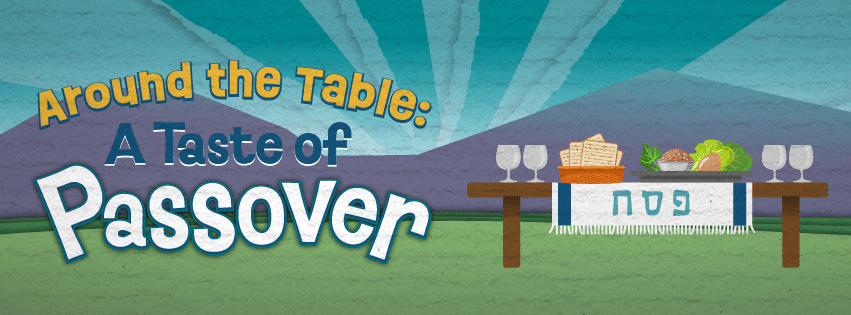The Bible is God’s true Word. It is inspired, infallible, ancient, and entirely trustworthy today.
When I was in college, I had a lovely roommate from Mississippi. As a Chicago native, I was unlike anyone she had ever lived with and vice versa. We loved each other’s accents, and often asked questions about one another’s life back home to compare differences.
One afternoon on a drive to Walmart, we were talking about coffee shops. I asked her, “Do you all have Caribou in Mississippi?” She had a very puzzled look on her face and got quiet for a minute.
“Well…” she thoughtfully began, “I don’t know that we do … we have white tailed deer, though!”
It took me a minute to realize she misunderstood what I was wondering and thought I was asking about ACTUAL caribou … the animal … not Caribou Coffee! When I explained to her that ‘Caribou’ was a popular coffee shop chain up north, we laughed until we had tears streaming down our cheeks.
This was a hilarious exchange that still makes me smile, but it’s also a great example of what happens when we hear something and develop a response to something without knowing the context or place in which it occurs. I’m sure you have your own funny “context” stories!
Context matters in understanding so much of what we encounter in our lives, but it is especially critical to how we encounter and understand Scripture.
Why is it important to see Scripture in its time, place and language?
The Bible is God’s true Word. It is inspired, infallible, ancient, and entirely trustworthy today. To articulate its substance succinctly, it is God’s revelation to mankind about Who He is, who we are, our relationship, and what His Kingdom is like. The infallibility of Scripture was accomplished through God’s oversight of different human authors to record this revelation. Because these things are true, it is therefore also true that Scripture shines from a prism of rich context. It has settings, language, culture, and timeframes in which it was recorded alongside the timelessness of the truths it reveals.
This context is a vital key to grasping the intention and deeper meaning of the text and experiencing the unending goodness of Who our God is in a real, transformative way. Outside of its time, place, culture, and language, the Scriptures can be muted (like vivid colors becoming dim) or easily misunderstood and dismissed.
When we explore and study the Bible in context, we grow in understanding that Scripture reveals the Living God is infinitely more wonderful than we can describe. There is quite a difference between hearing the Word and tasting and seeing the Word in its glory. Many people are sitting at the table and benefit from hearing it. But everything changes when they feast on it.

A Glimpse of Scripture in its Context
Authors and Stewardship
The TaNak—the Torah (law), the Nevi’im (prophets), and Ketuvim (writings)—is what Christians refer to as the Old Testament. These Scriptures are a collection of books written in Hebrew and produced over a thousand-year period that arose from the history of ancient Israel. The Jewish prophets and biblical authors grasped, stewarded, and revealed that the story of what God is doing through Israel is central to what God is doing for all humankind. The TaNak reveals the origins of mankind, the birth of the nation of Israel, their history in the land, various exiles, and how God would bless the world through Israel with the coming Messiah and the establishment of His Kingdom.
The New Testament is a collection of books and letters written in Greek (yet from a very Hebraic context) by Jewish authors who were Jesus’ earliest followers. The writings not only served as a guide for early believers in their discipleship to Jesus, but also served as a continuation of the epic throughline found in the TaNak of what God was doing to restore His creation to Himself.
Wonder Ink’s 3-year, 52-week children’s ministry curriculum offers kids space to fully find their place in God’s Big Story. Children discover they are Known by God, Loved by Jesus, and Led by the Holy Spirit.
Language and Time
The biblical authors and the people to which these messages were originally delivered were residents in an Eastern cultural landscape. The Bible communicates most often through concrete images and parables—an ancient Eastern way of communicating – rather than abstract concepts and argumentation common in Western/modern forms of communication. Hebrew is a language rich in imagery, and the understanding of it profoundly impacts the depth we experience in the text.
The people of ancient Israel followed a calendar established by God in the Torah that not only connected to their seasons and times of harvest, but also established forever what He called “appointed times.” The biblical feasts, festivals, and sabbath highlighted their covenantal relationship as well as God’s provision and presence.
Each appointed time holds prophetic significance regarding the Messiah and the Kingdom. Shabbat (sabbath), Yom Kippur (the Day of Atonement), and Passover are just a few of many of these appointed times that all continue to be a vital part of the Jewish people’s lives to this day.
The timelines found in Scripture anchor themselves in this God-given calendar. To not understand time, seasons, and the incorporation of appointed times into the stories of Scripture can cause confusion for readers—even down to how we see a day, for example.
When God was creating the world, we see in Genesis that he first created night and then day. Because of this precedent, the Jewish calendar date begins with the night before. So, while modern calendars track days from midnight to midnight, the Jewish day is tracked from nightfall to nightfall. This reality of time shifts how you see and understand things as simple as time/days when you are reading the Bible.
To articulate [the Bible’s] substance succinctly, it is God’s revelation to mankind about Who He is, who we are, our relationship, and what His Kingdom is like.
Social Structures and Priorities
Modern Western culture elevates the individual, the biblical world of ancient Israel and current Eastern contexts elevate community. This reality guided how society was also organized—instead of business or industry determining how culture organized itself, the Eastern world of the Bible was organized around the family and tribe. This reality meant that values like hospitality, community, and honor were not just practiced, they were hills to die on. (This changes how you read passages like Genesis 18, Luke 9, or even Hebrews 13:2)
The authors scribed God’s Word not from a modern individualistic point of view, but from a “we” understanding of God’s love for all creation. Modern readers tend to assume that they as the individual are the ultimate audience intended by the Scriptures in how they are to be read and applied; however, the majority of Scripture is communicated through imagery of a Kingdom that is inherently plural.
When we grasp this, it transforms not only how we understand the Kingdom as it is described in God’s Word, but how we live it out together in a modern society that over emphasizes the individual and diminishes the importance of community.
How to grow in feasting on God’s Word
Friend, the Word of God is for you! Pray for the Lord to reveal Himself to you through His Word, and engage it daily. Here are some practical ways to grow in seeing the Bible in its language, time, and place:
- Learn about the Biblical feasts and festivals like Passover and Sukkot. Read books that help you see the connection between the feasts and the Messiah, and attend a Passover event.
- Begin a study of Hebrew words in Scripture and grow in your familiarity with what the original language was communicating.
- Learn from the teachings and resources of Messianic Jewish teachers or biblical historians that can illuminate the context of the text.
Reading in Scripture in context is critical to our faith and the foundations we stand on as disciples of Jesus. May you be inspired to pick up your Bible, consume it, and taste and see that He is good—yesterday, today, forever!

Discover Wonder Ink’s Around the Table: A Taste of Passover Event
Connected Easter is a digital and fully-customizable Easter Sunday school lesson series that includes the Connected Easter Lessons and the Around the Table: A Taste of Passover Event. This series takes kids and families on a journey through the Easter season and allows them to experience a “taste” of a traditional Jewish Passover meal (Seder Meal) that points throughout to Jesus. Learn more here!





